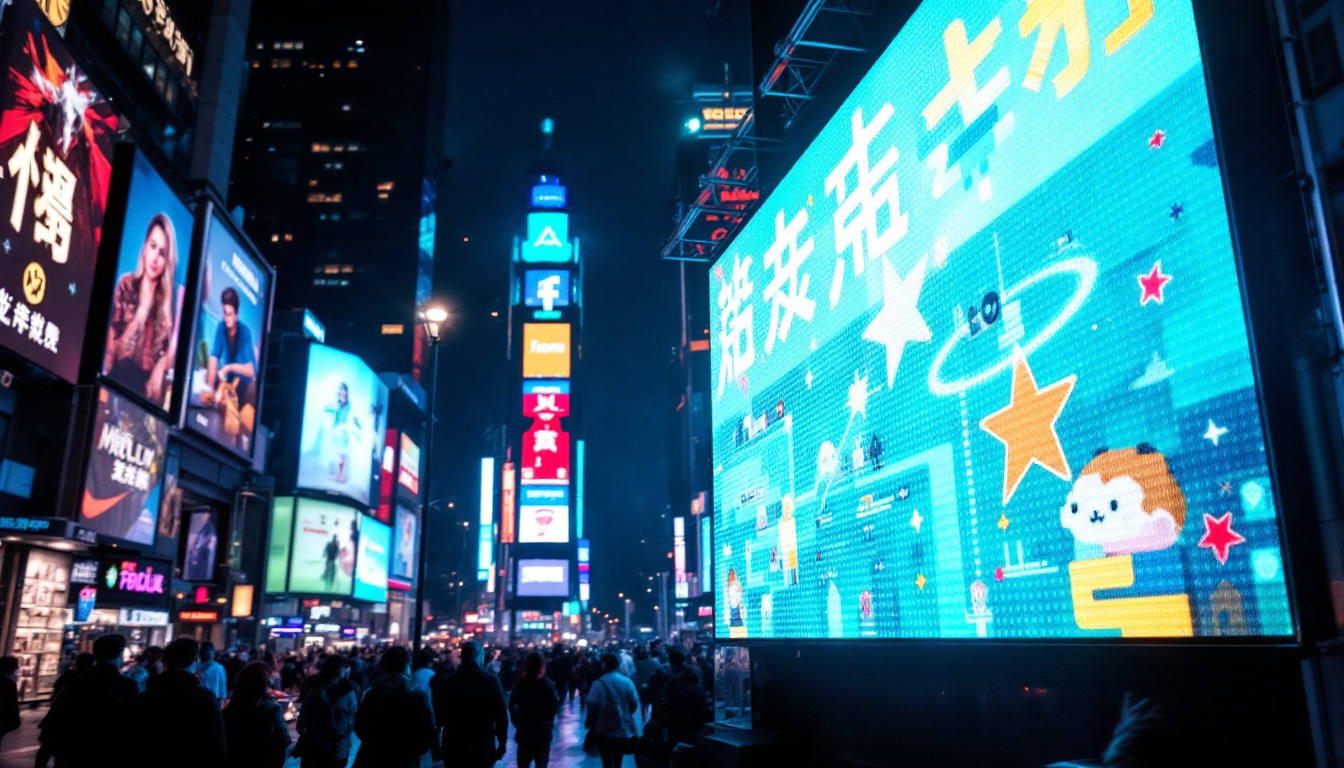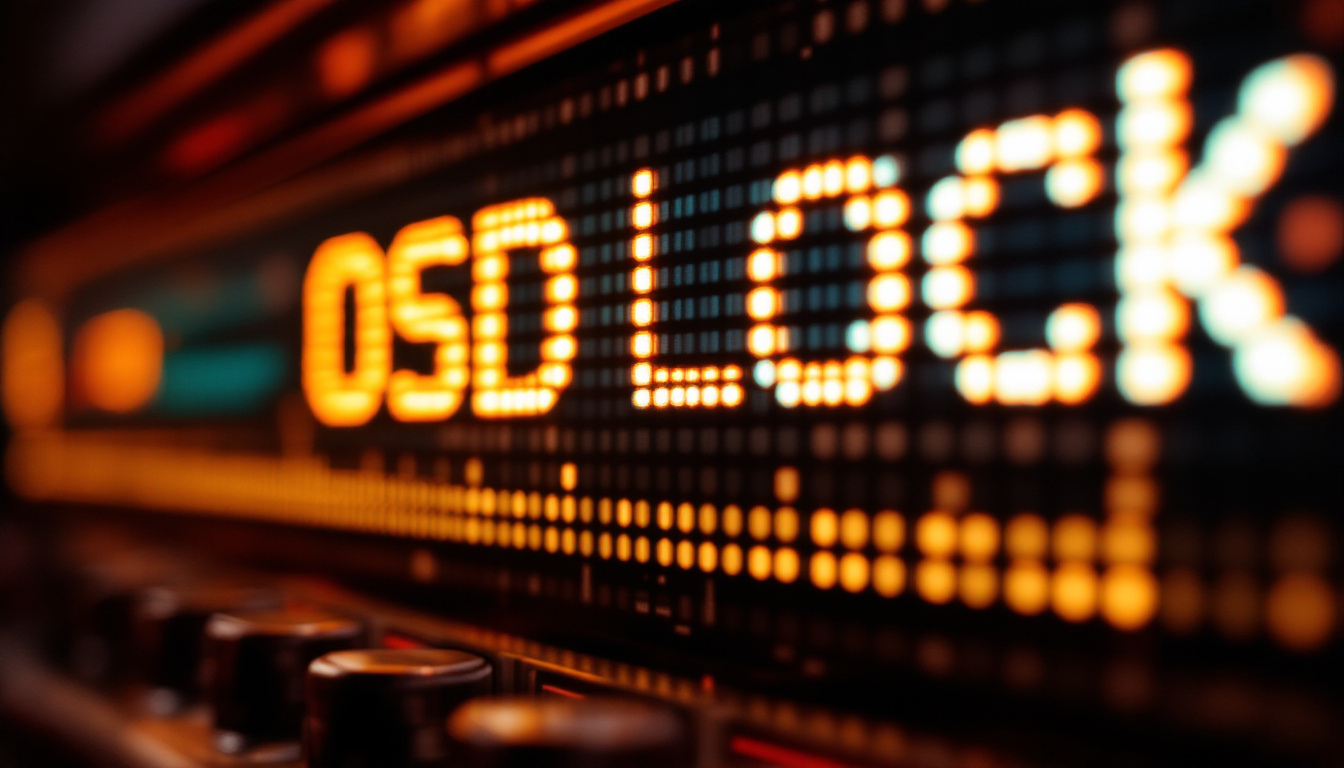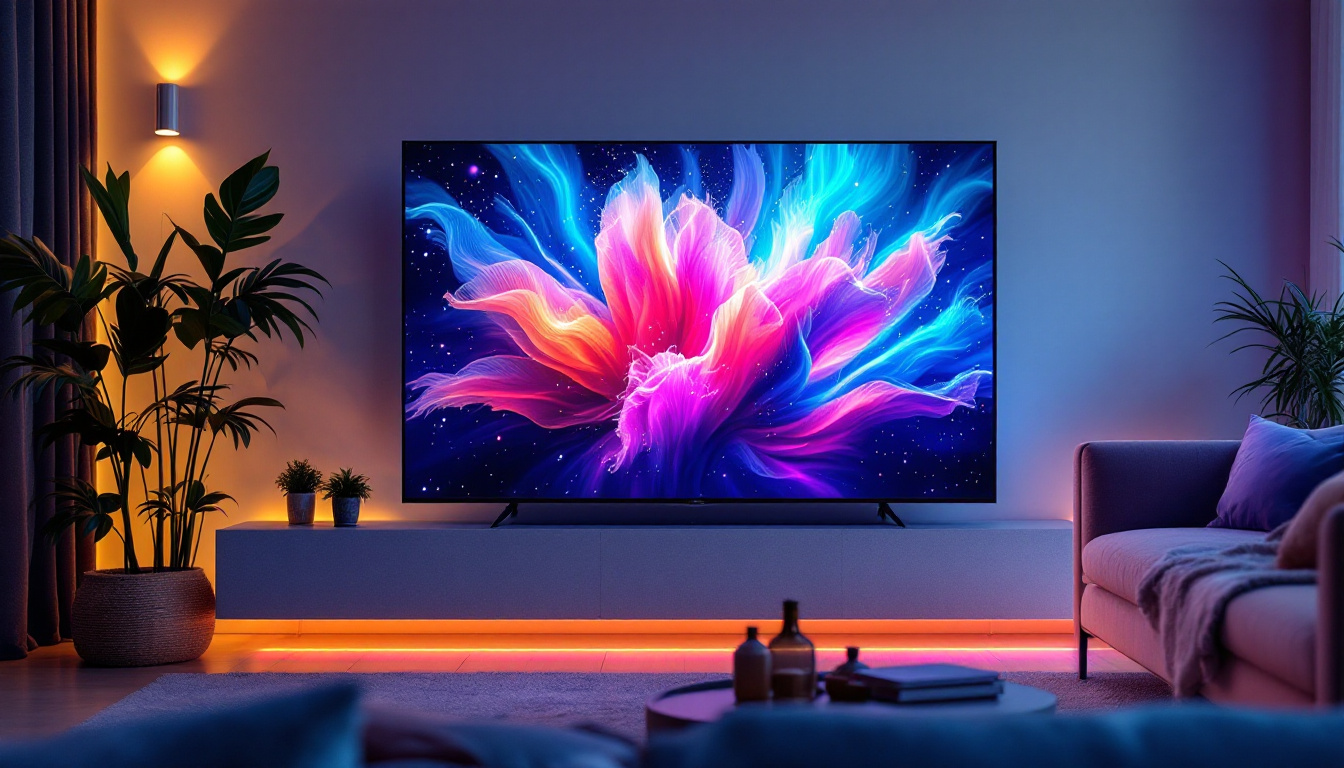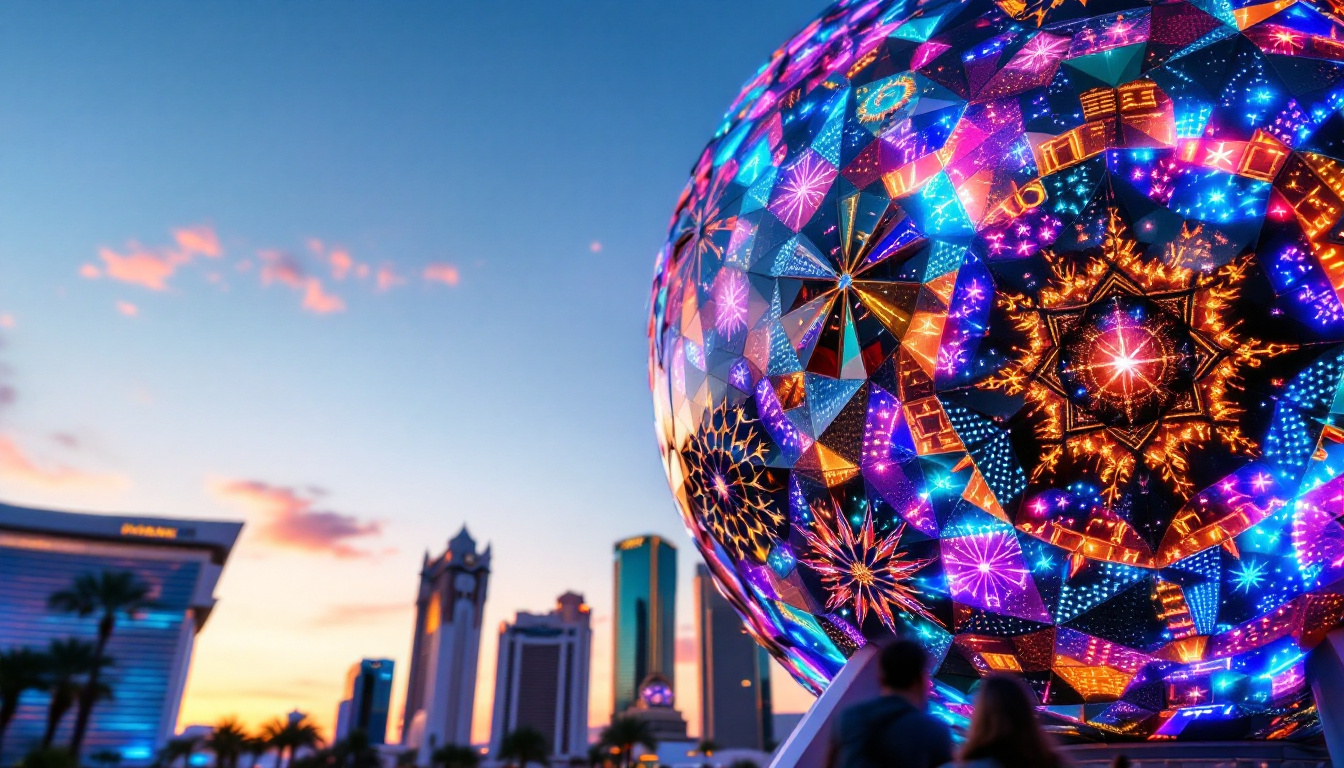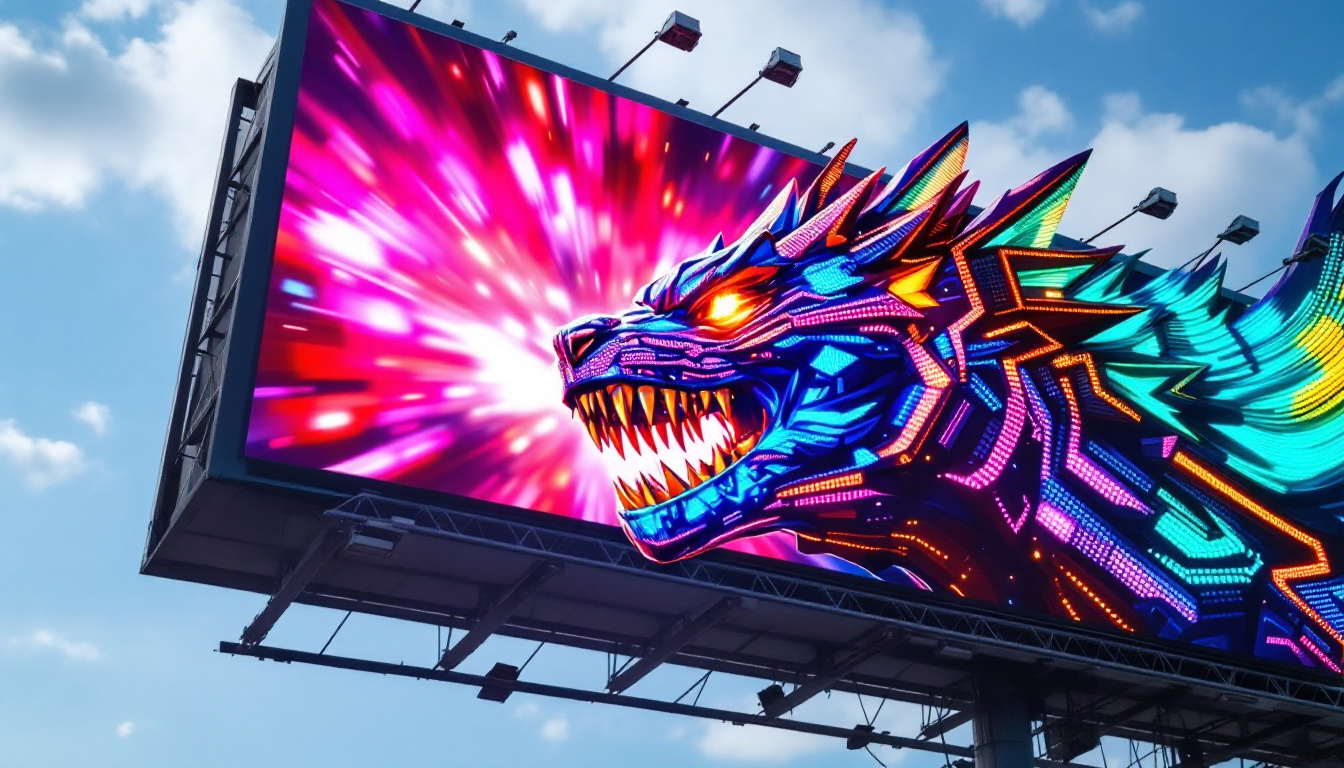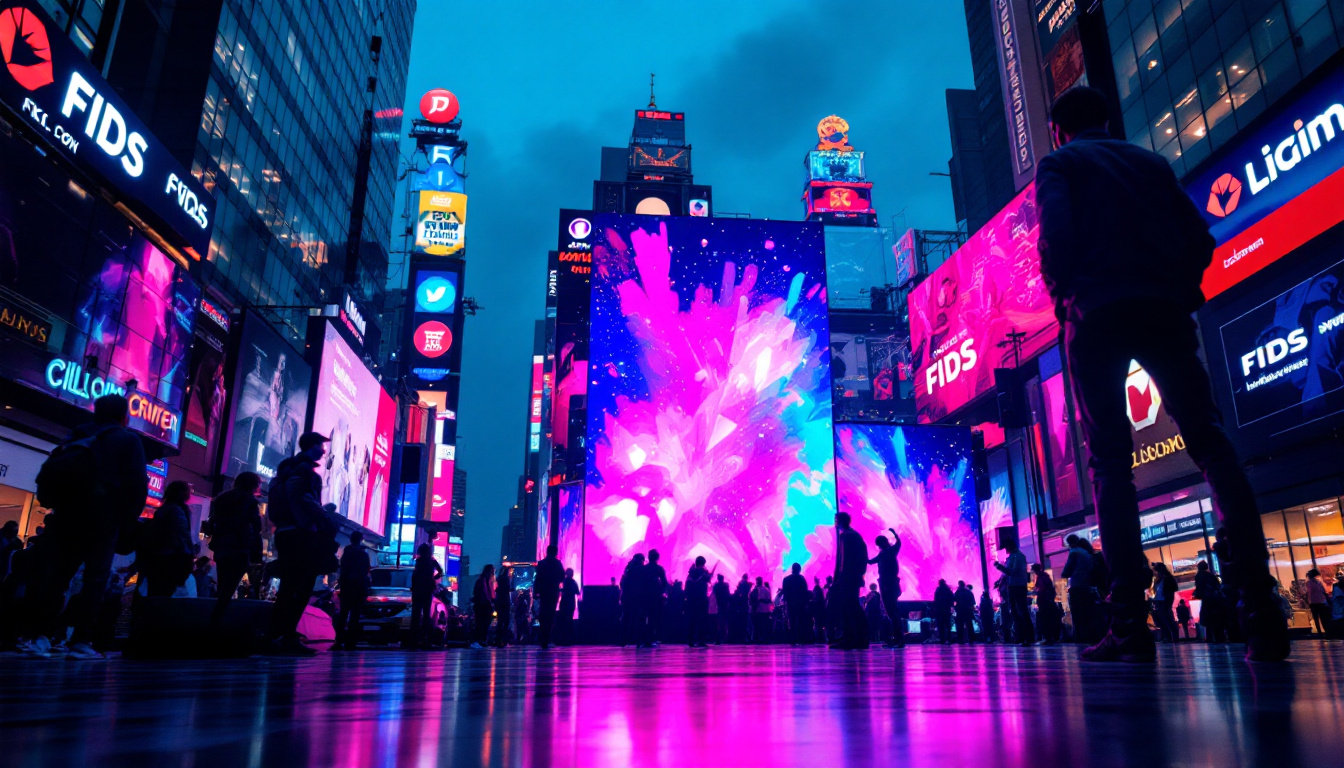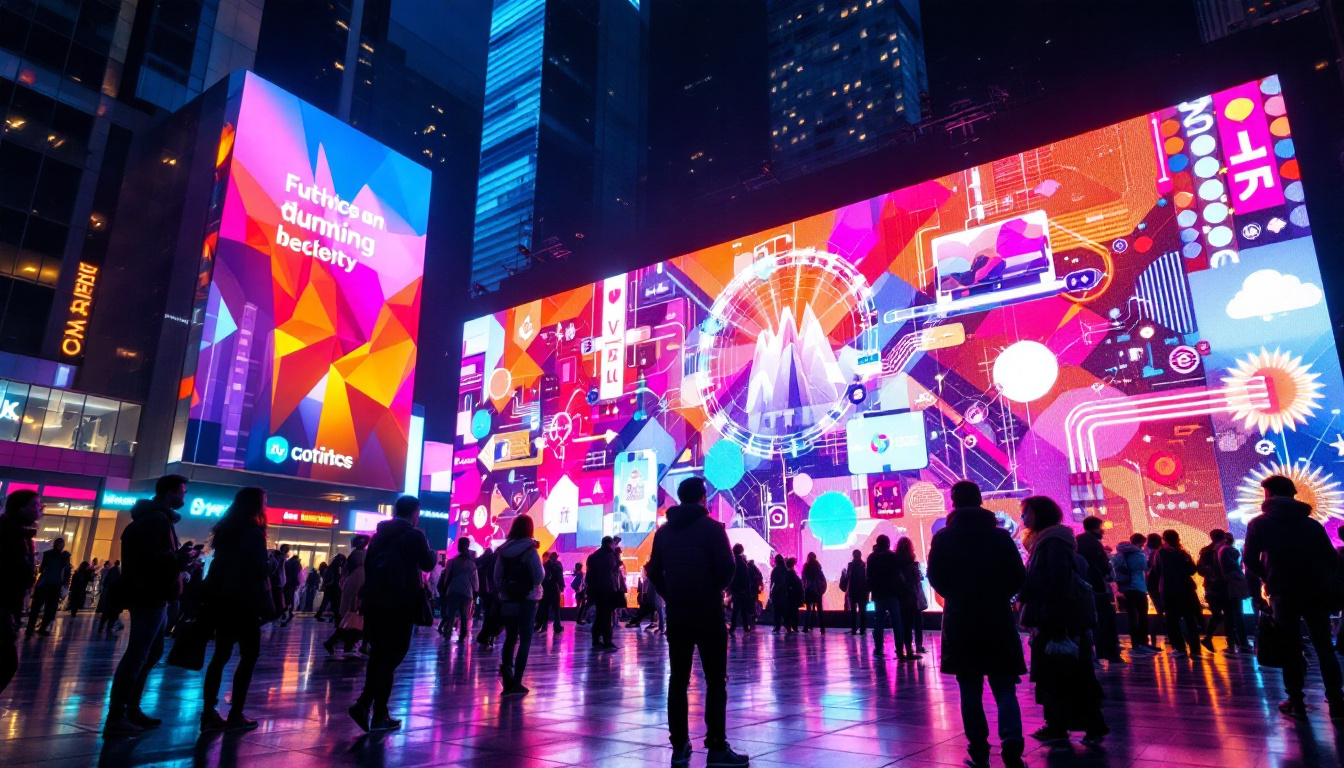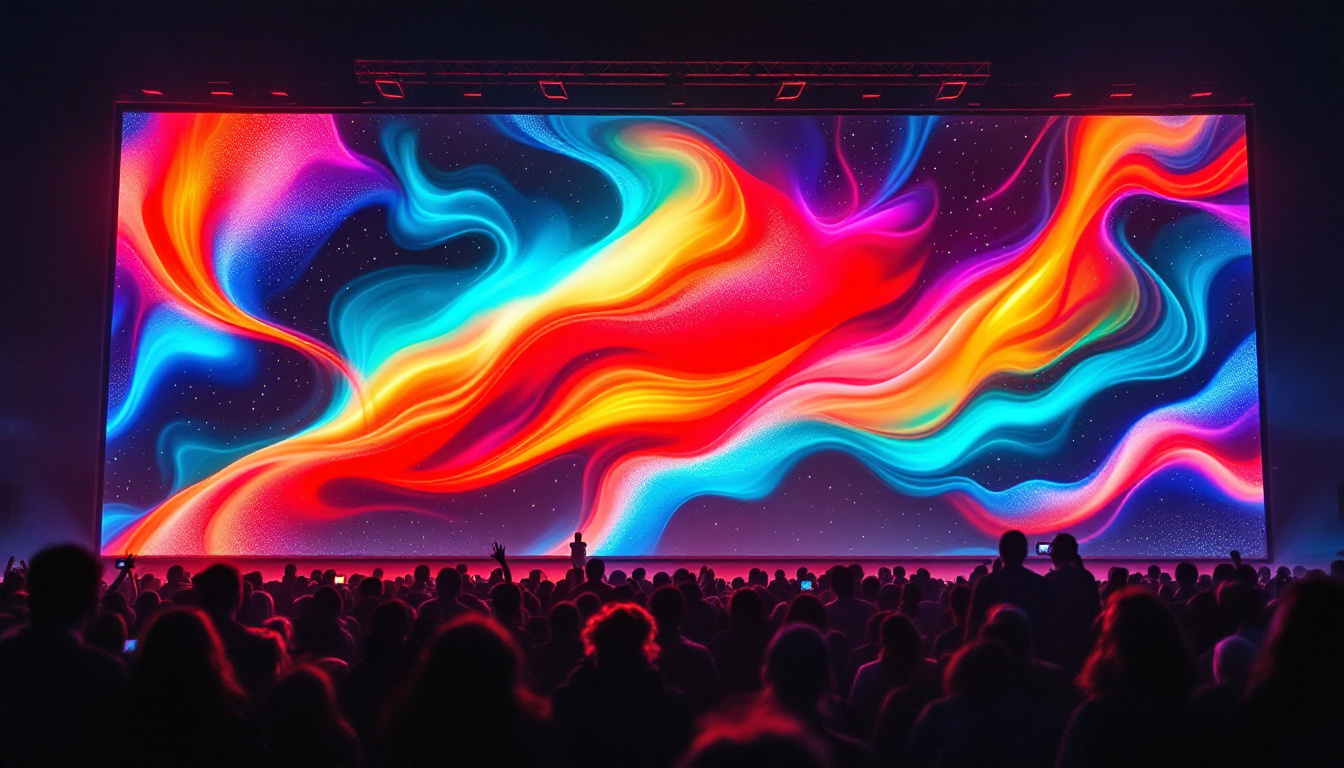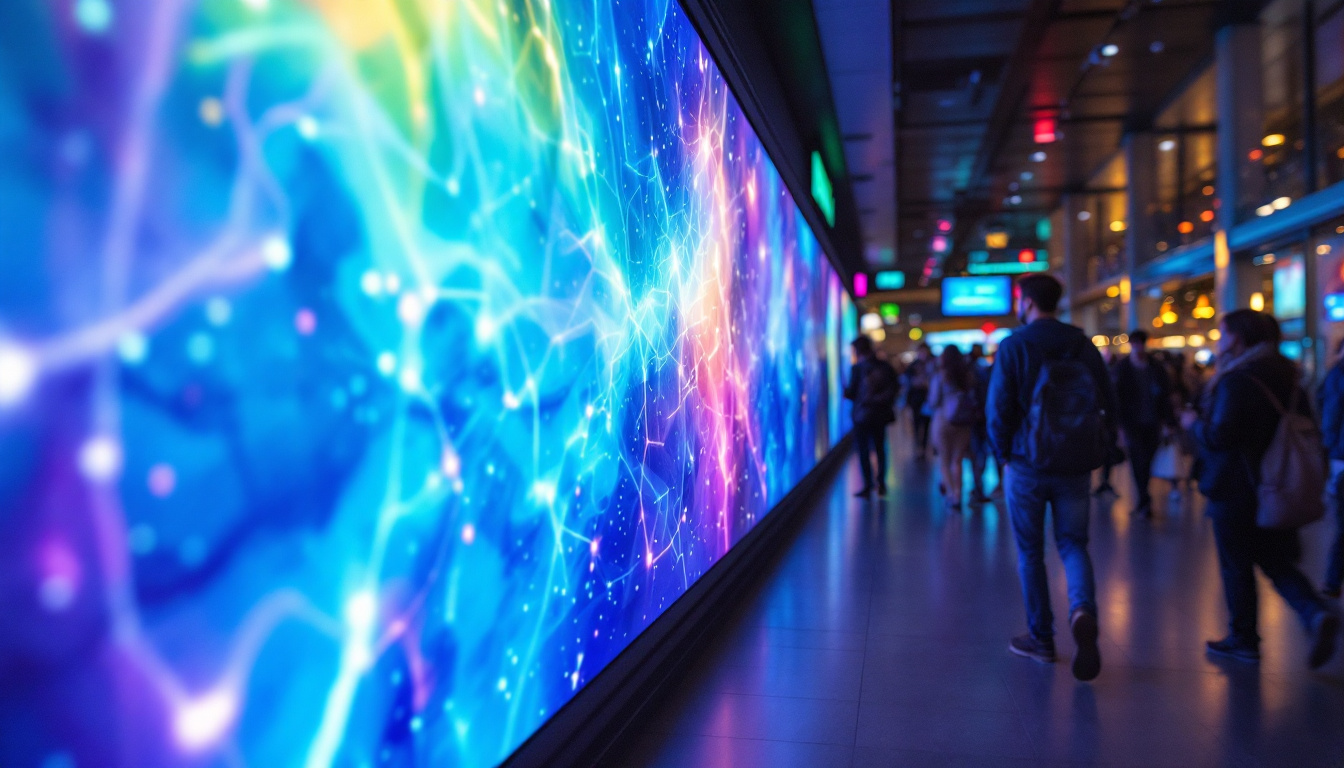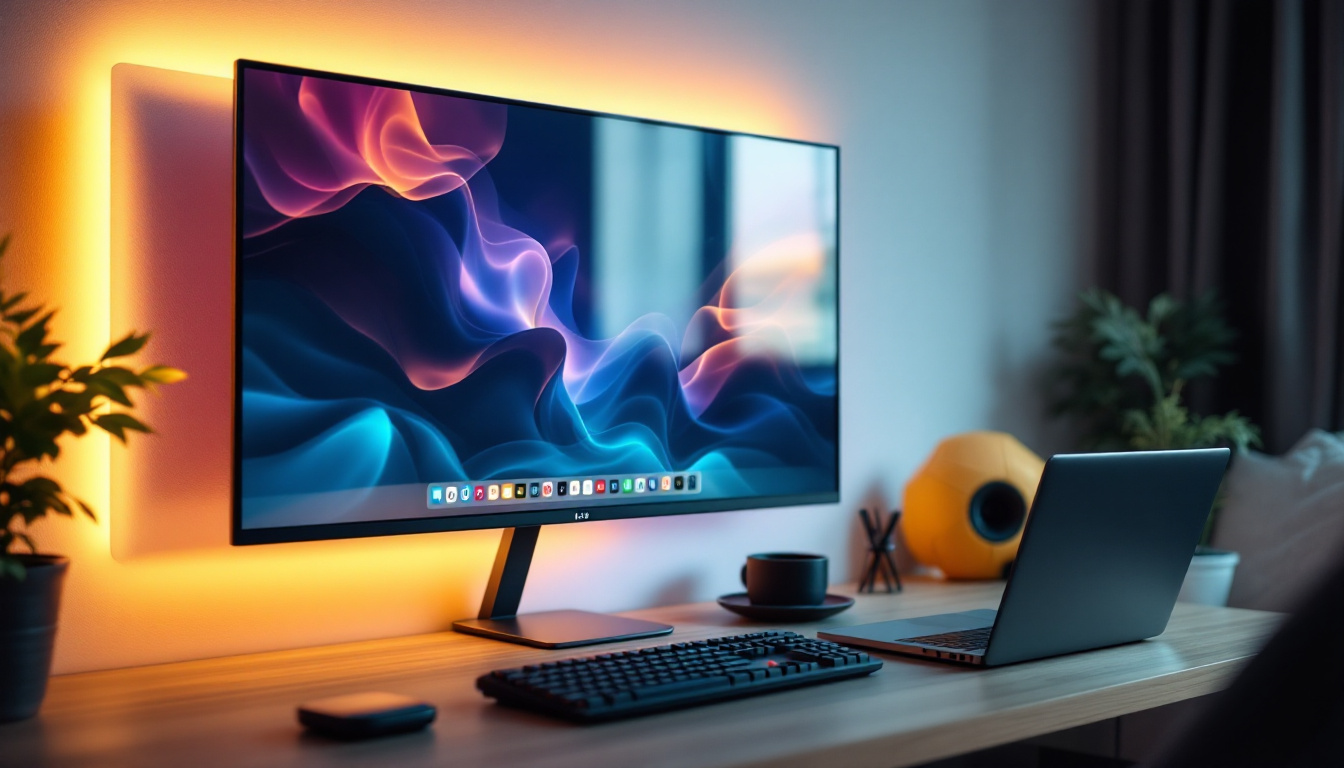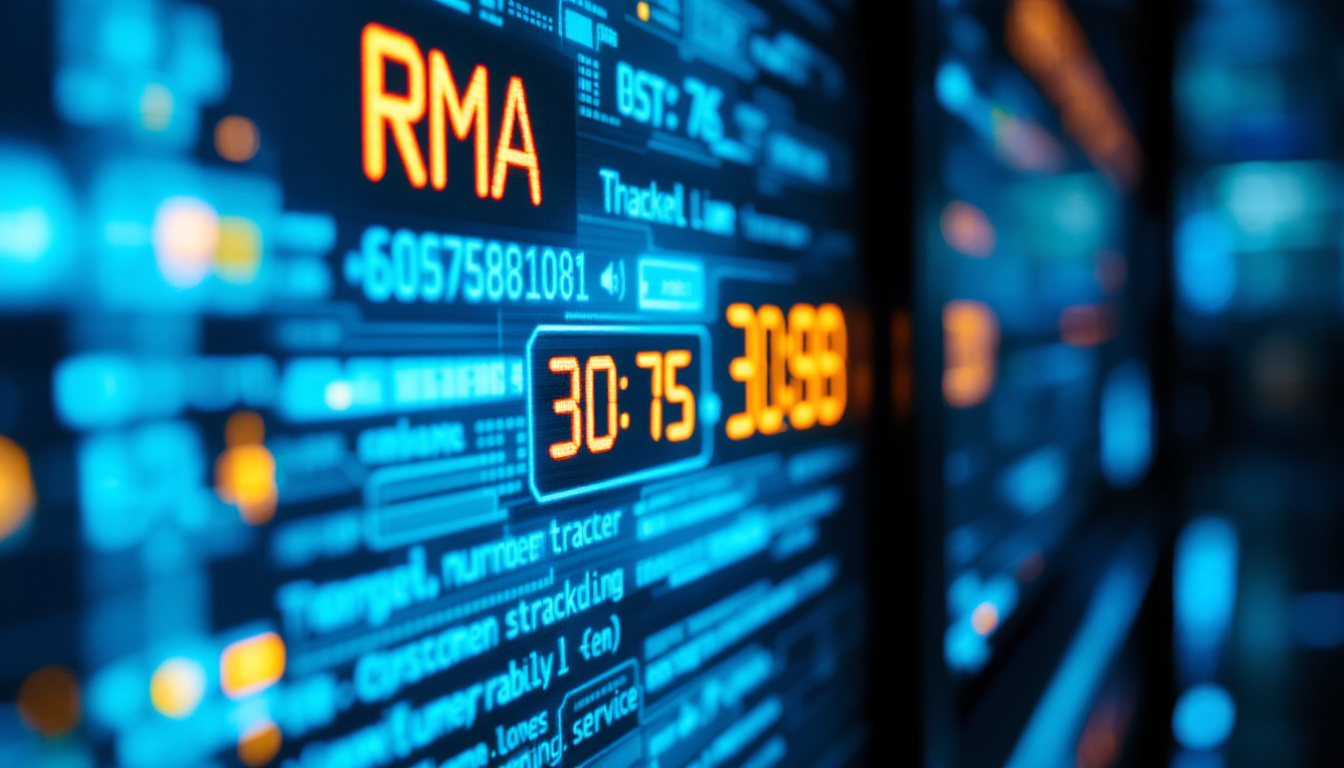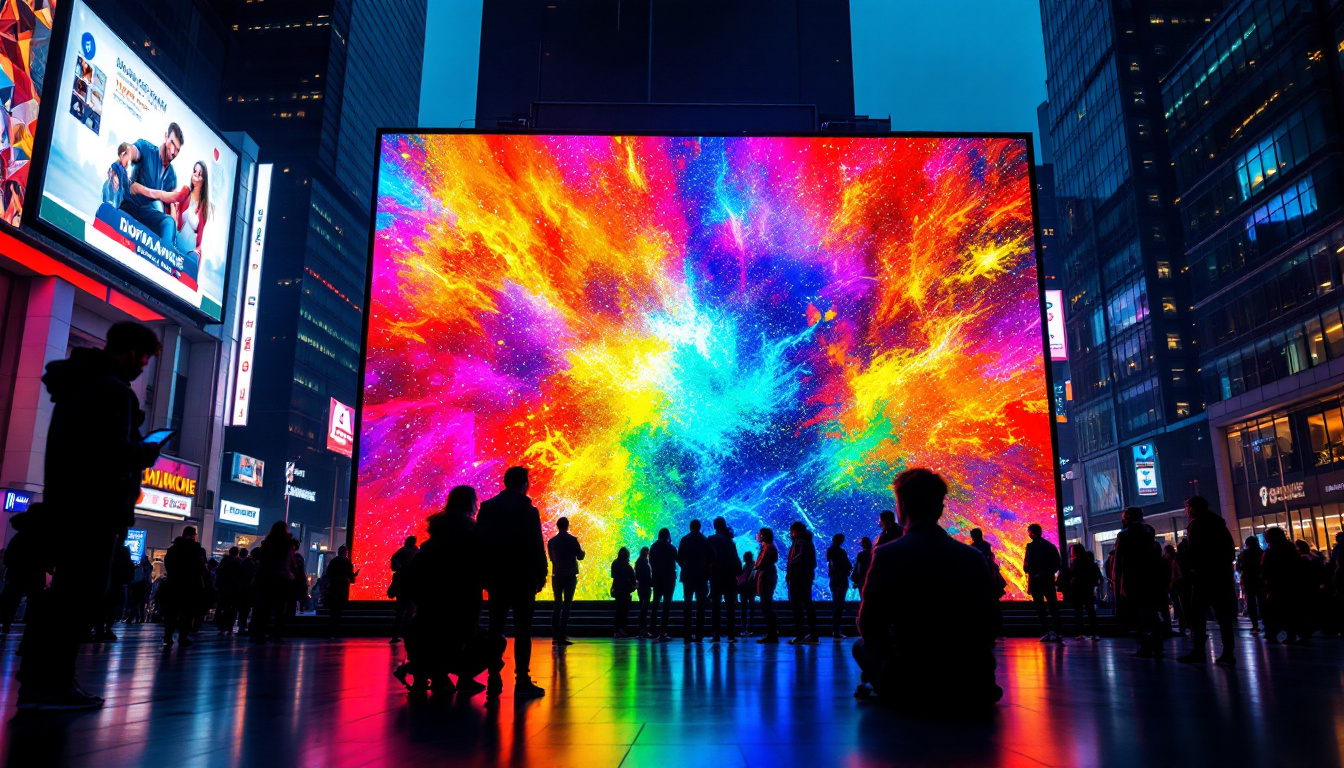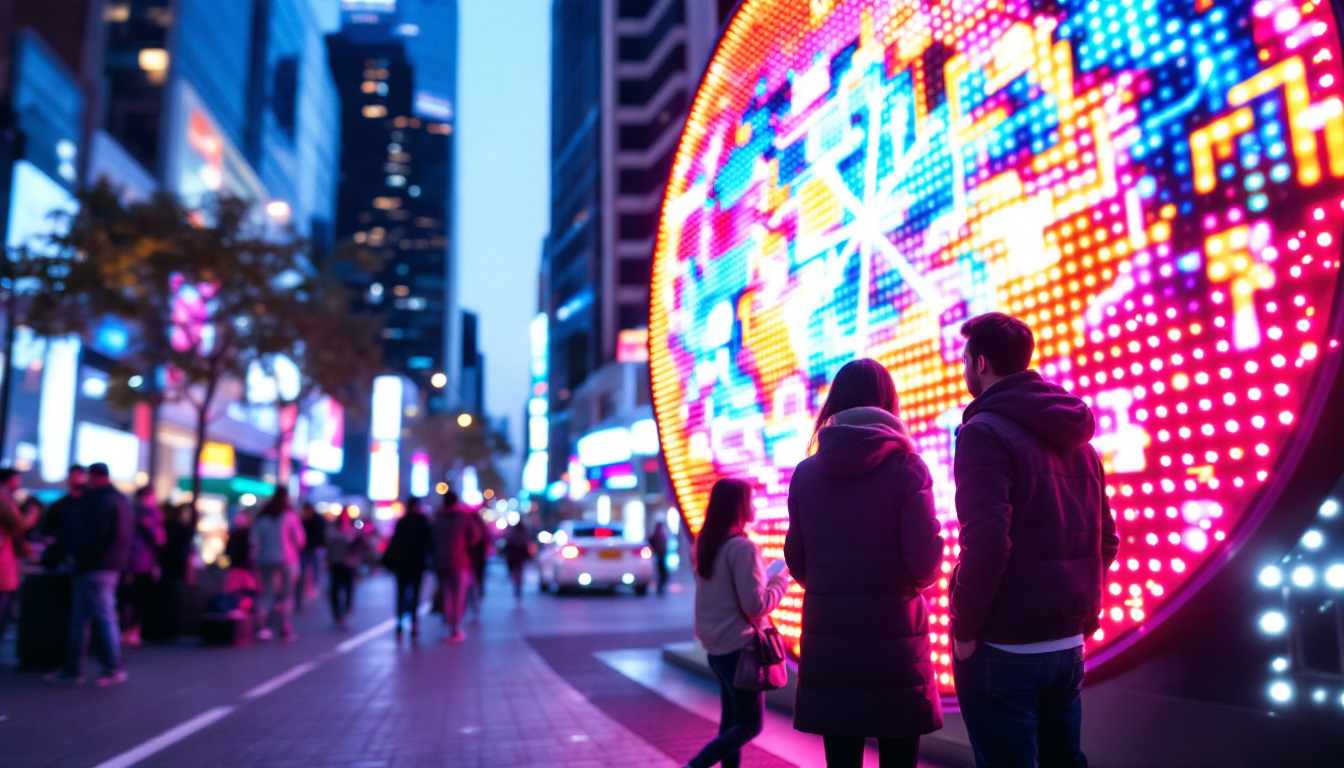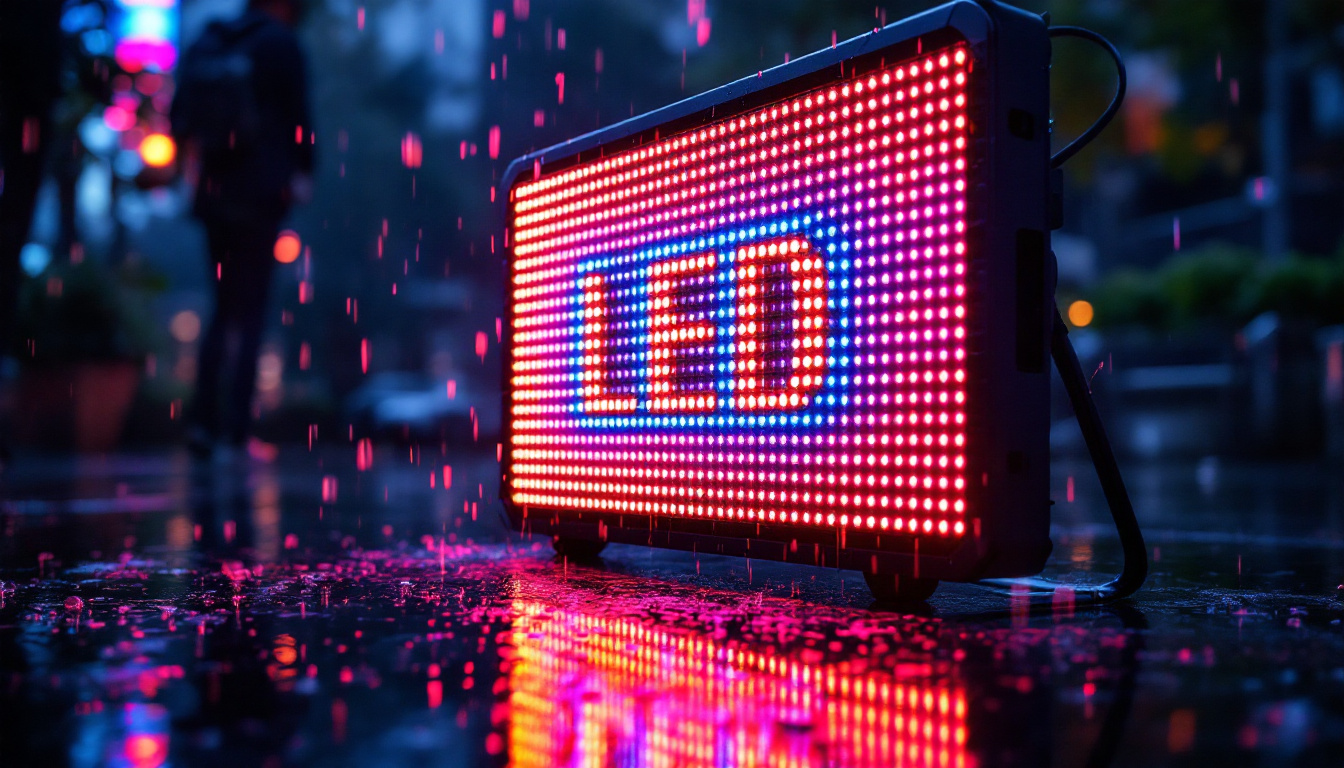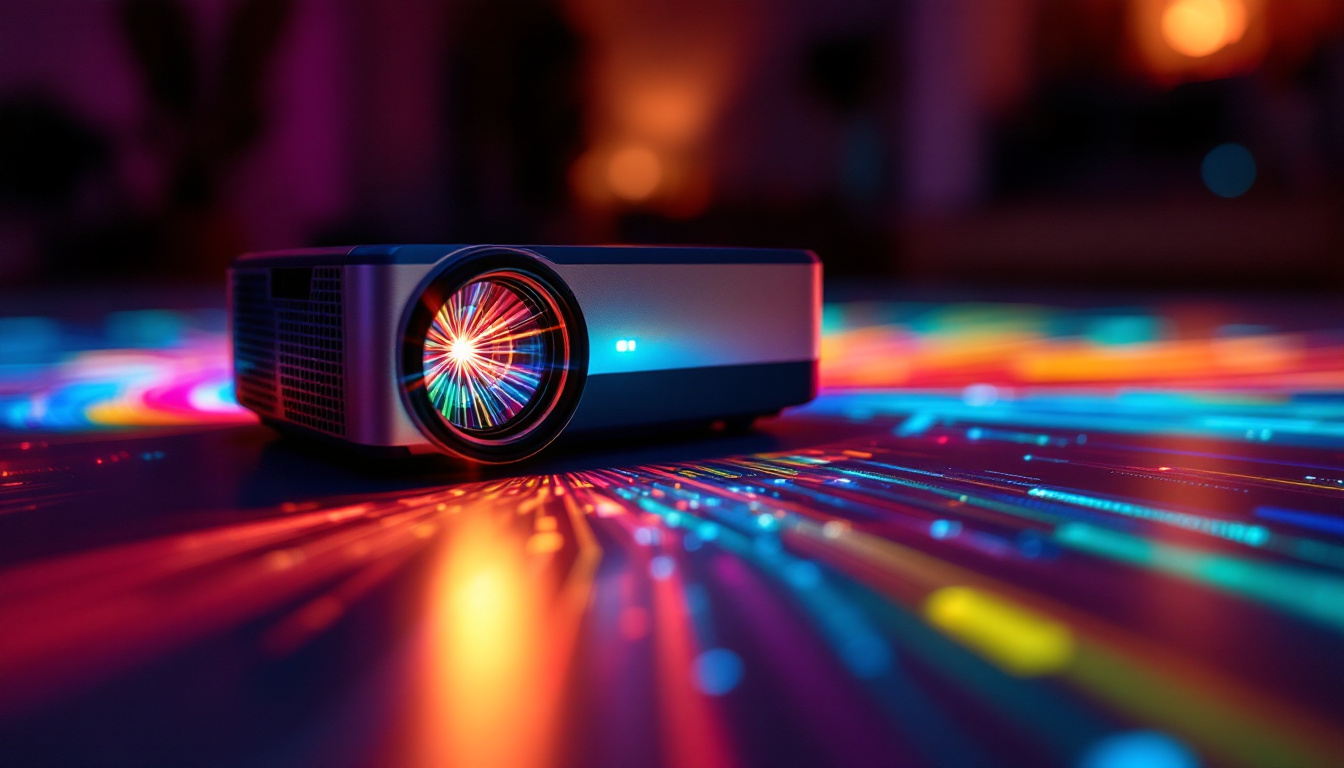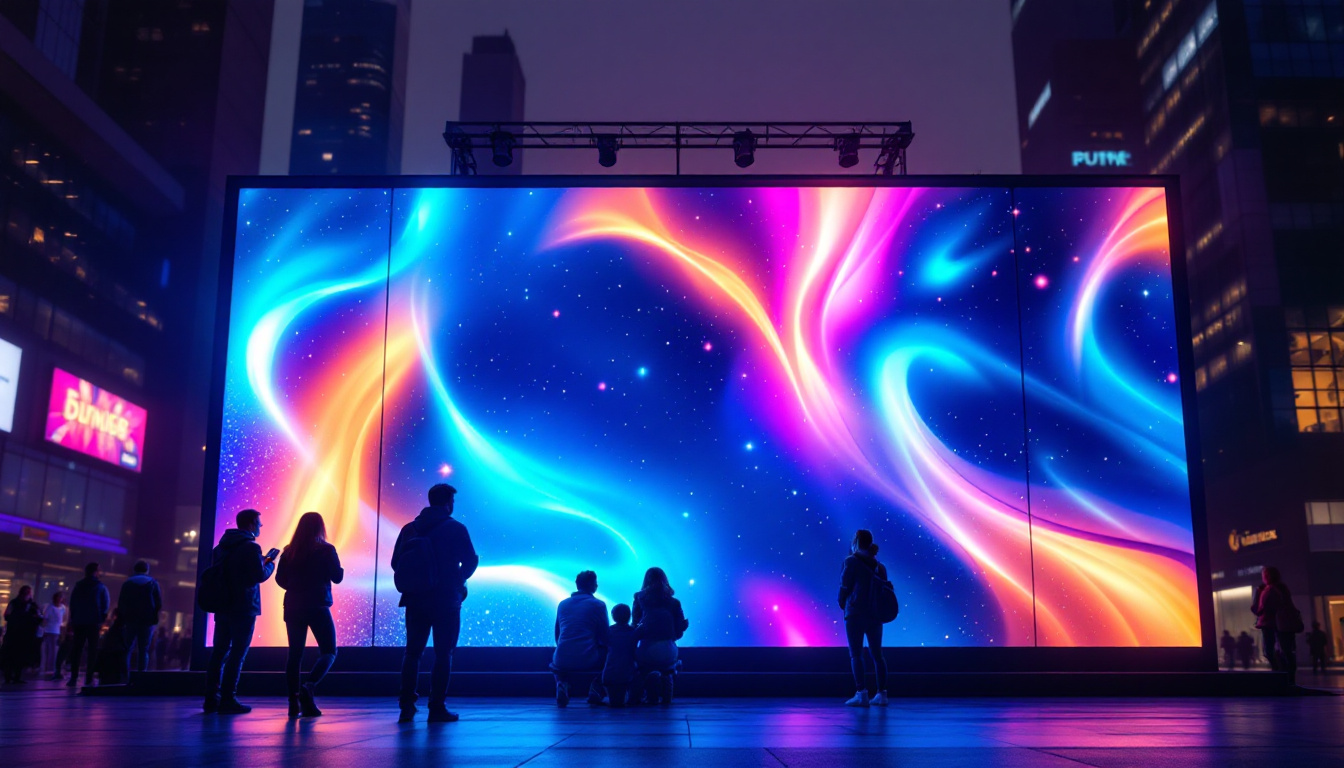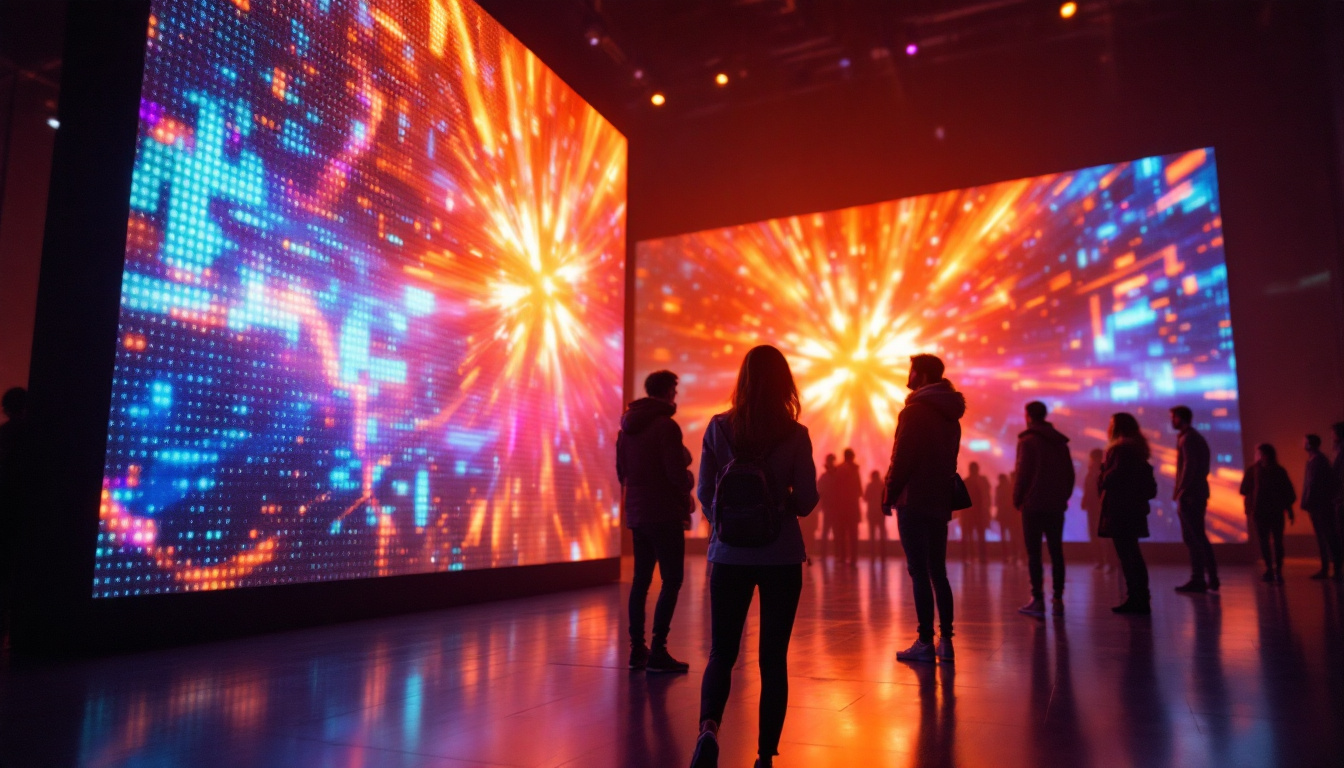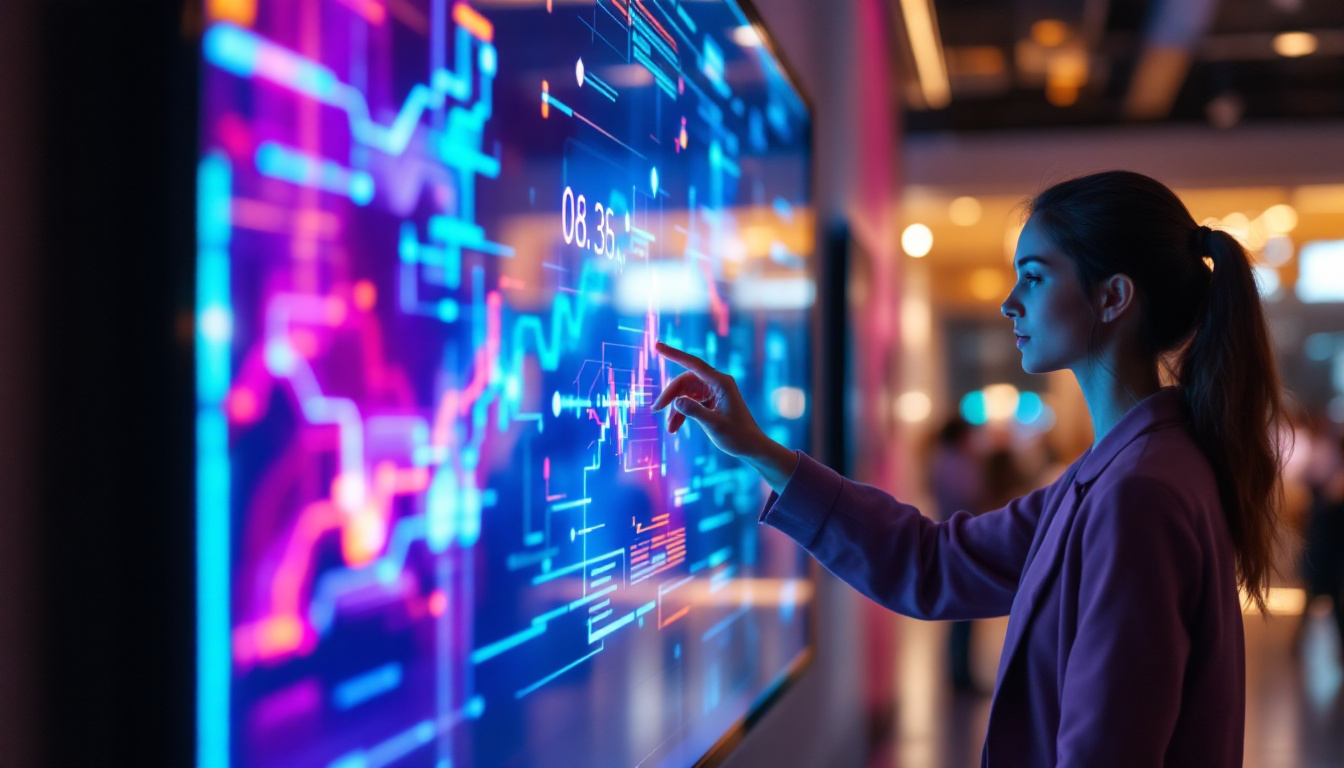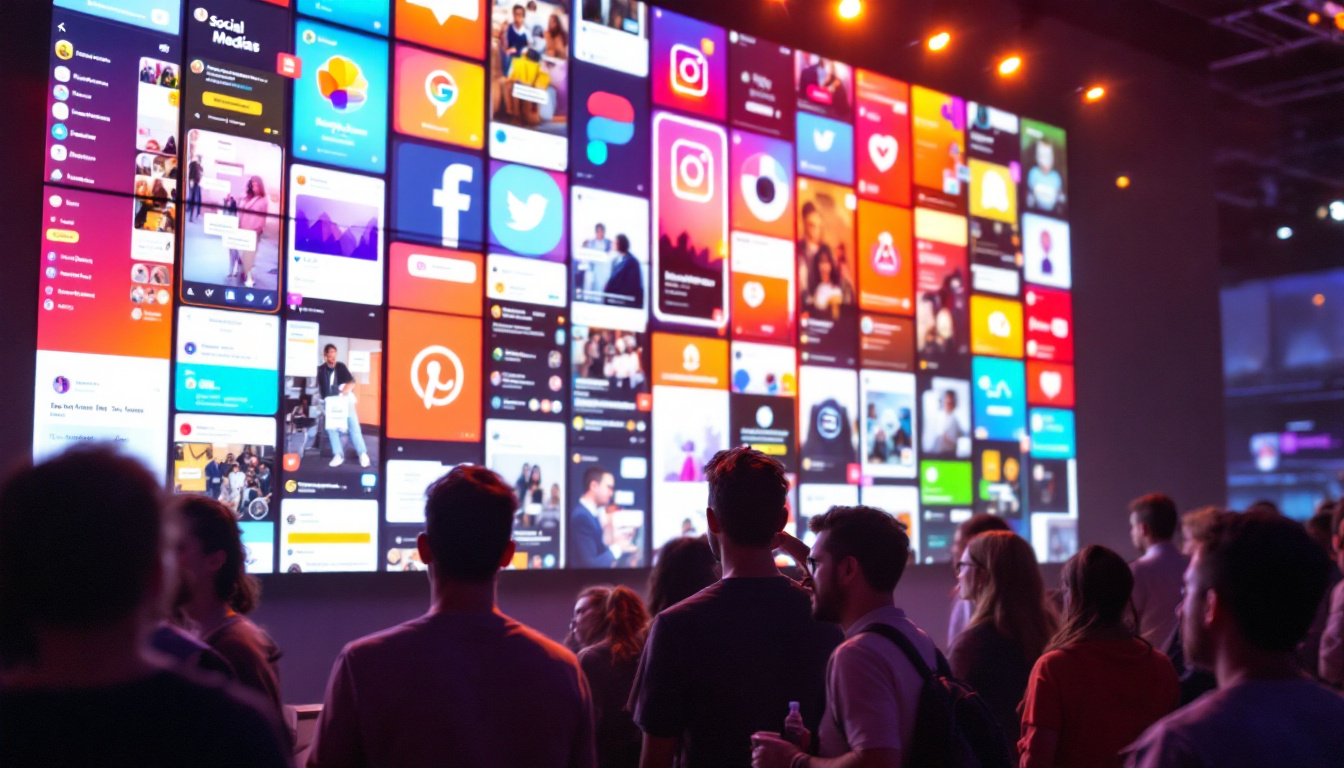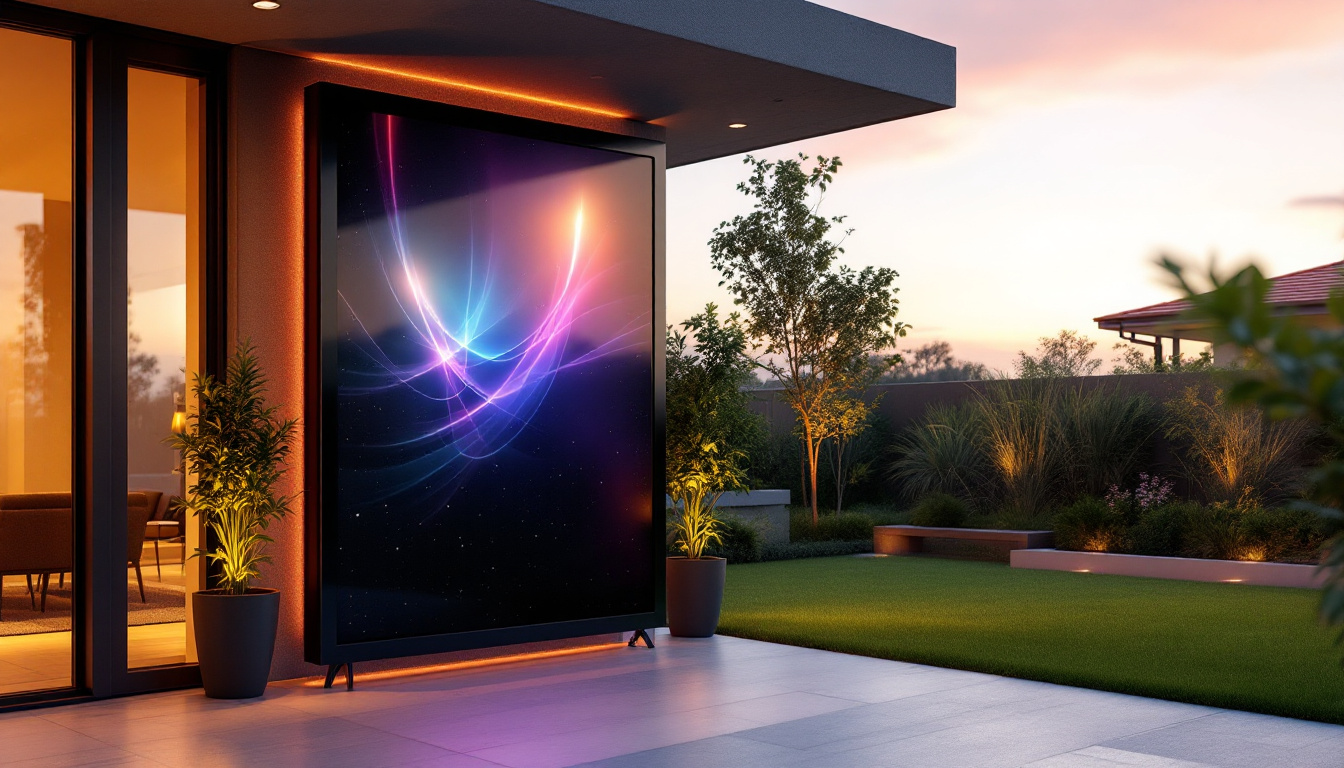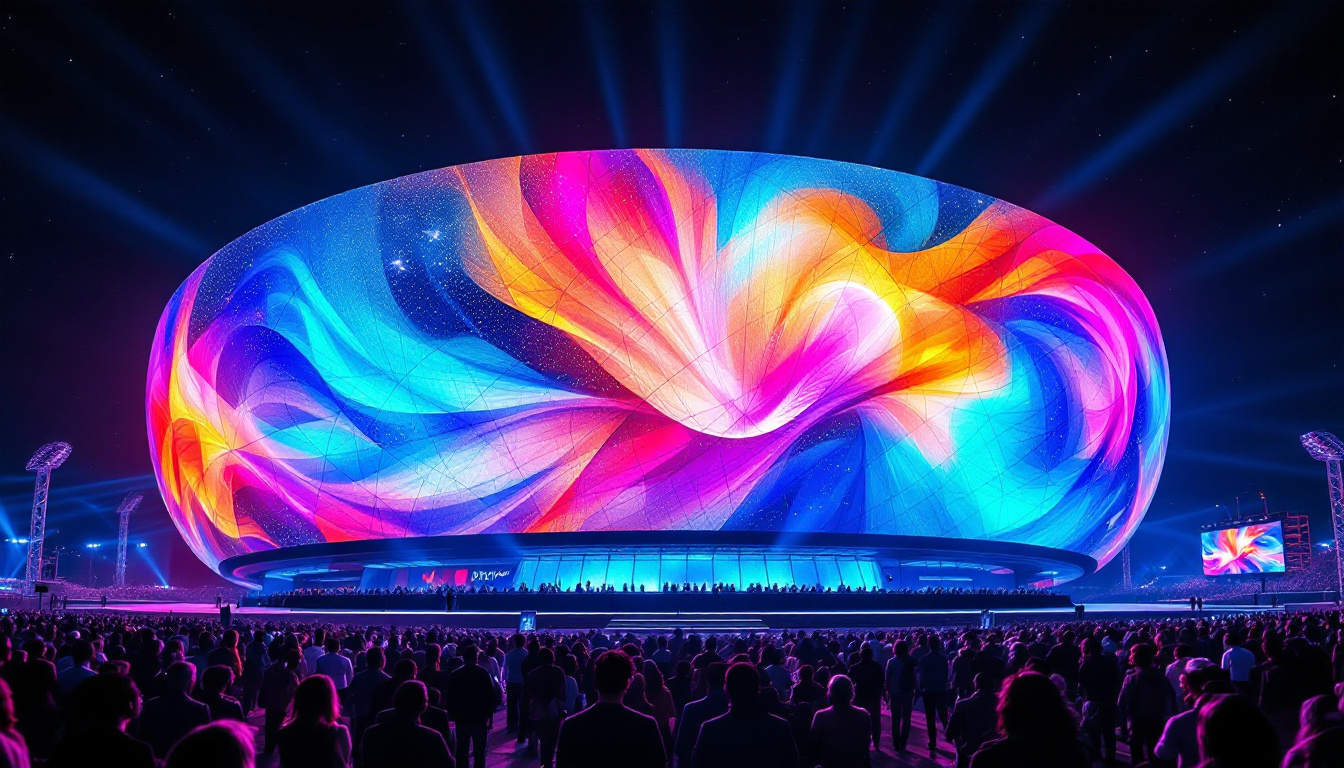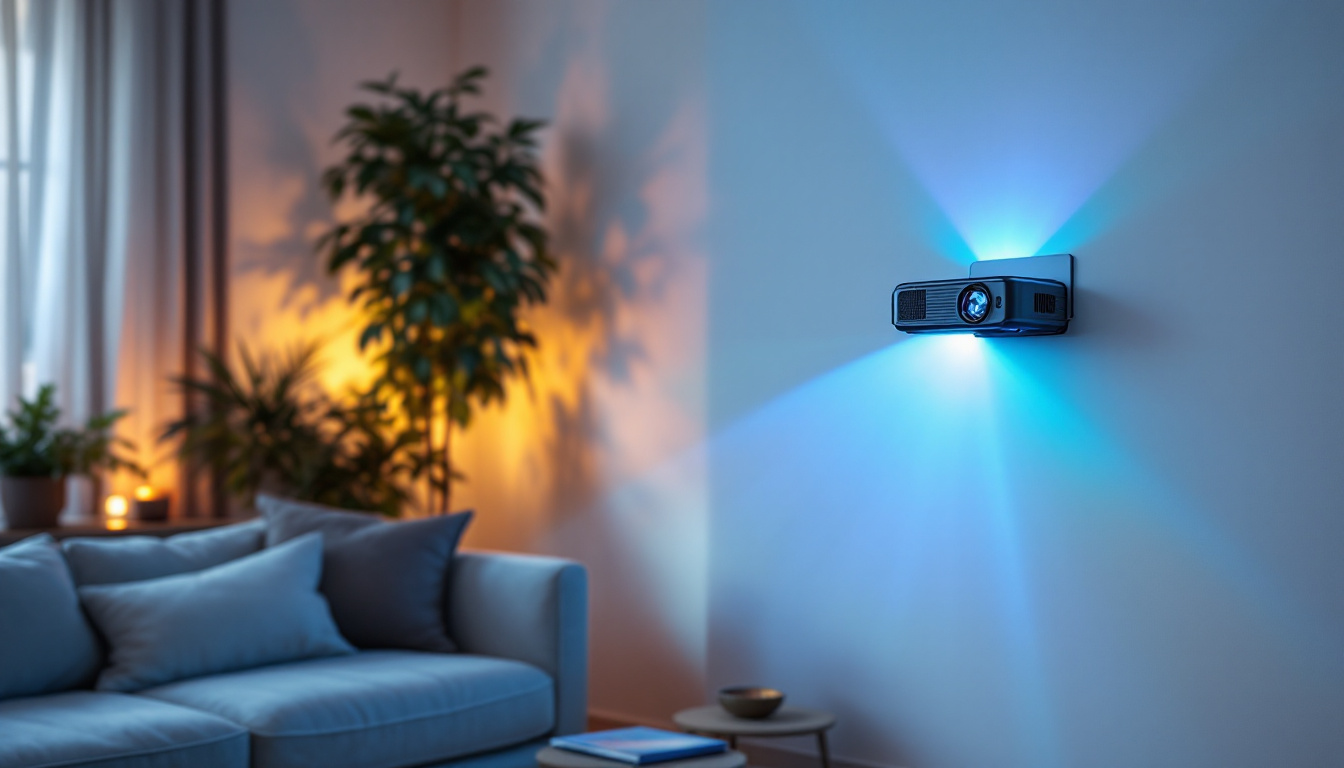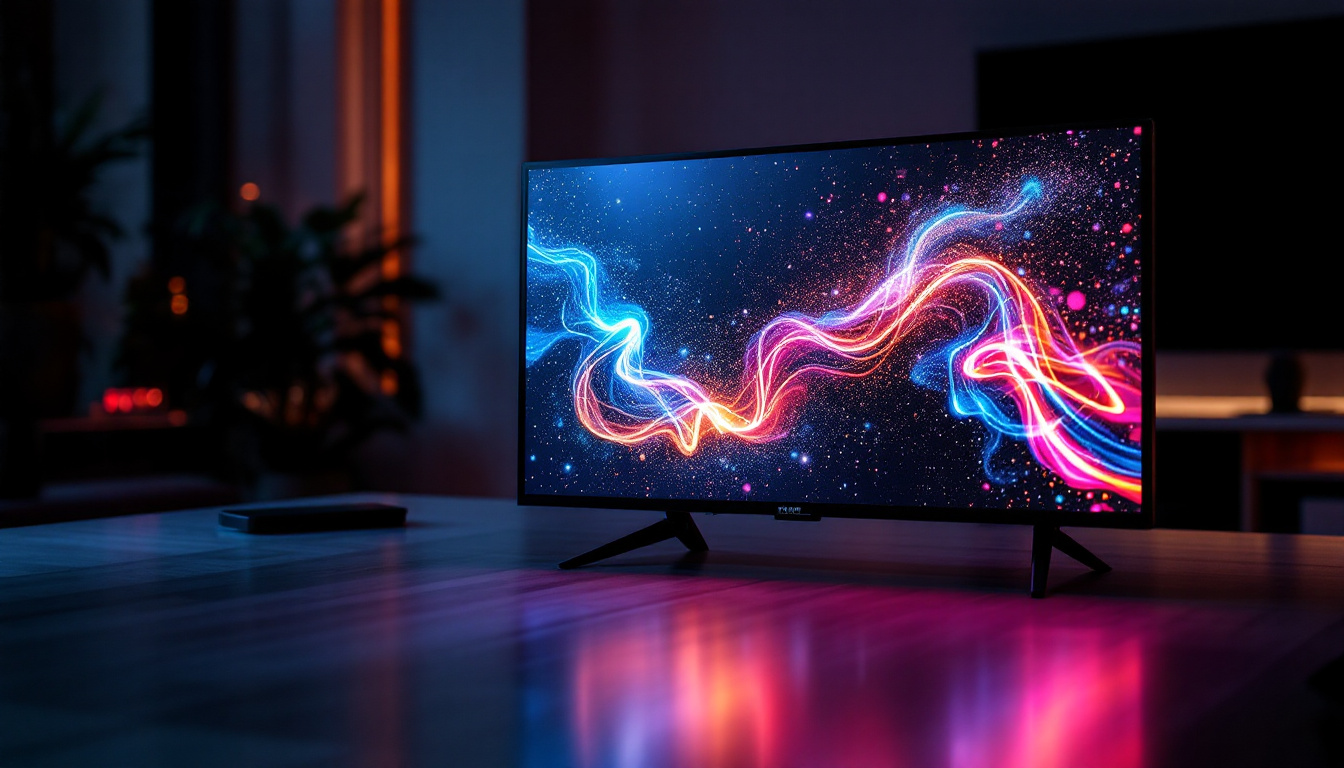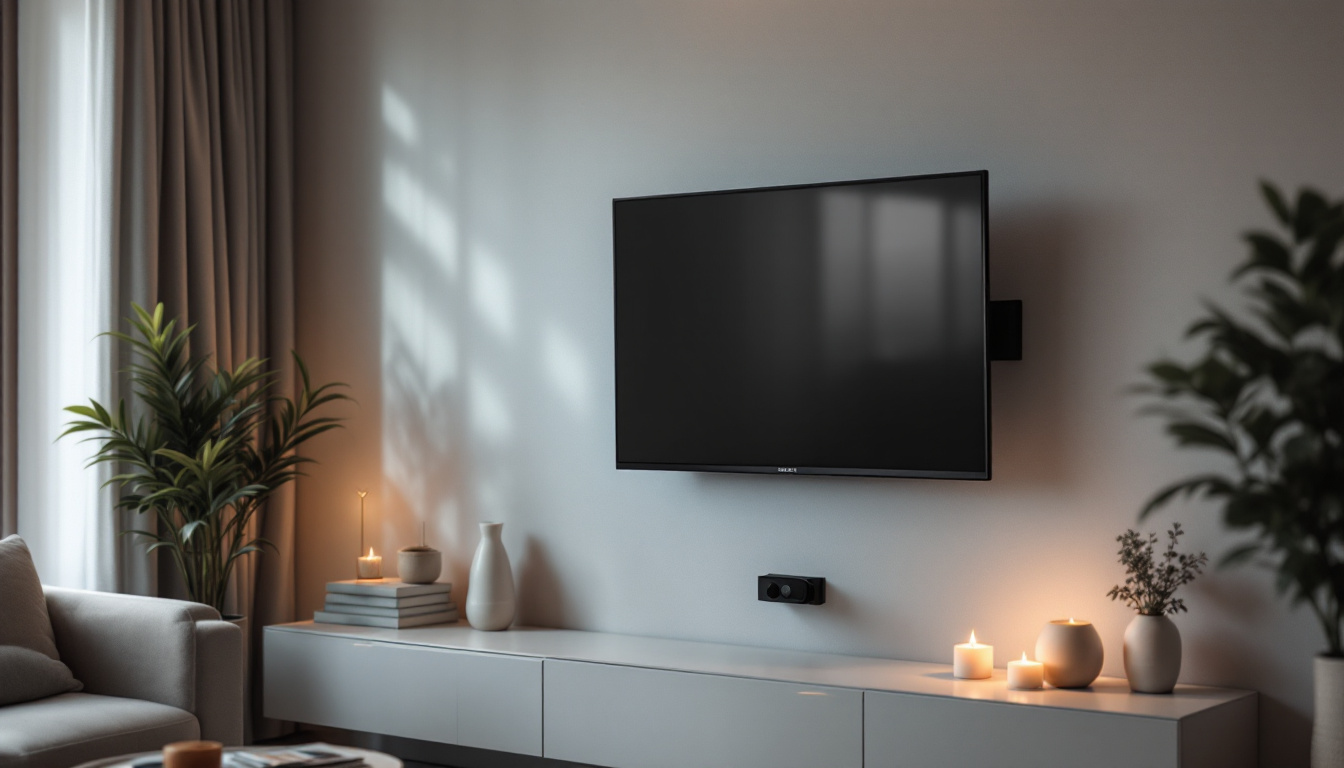LED Screen: LED Display Explained
In the modern world, LED displays have become ubiquitous, serving a multitude of purposes across various industries. From advertising billboards to television screens and computer monitors, the versatility of LED technology is evident. This article aims to delve into the intricacies of LED displays, exploring their functionality, advantages, and applications.
What is an LED Display?
LED stands for Light Emitting Diode, a semiconductor device that emits light when an electric current passes through it. An LED display is a screen that utilizes these diodes to produce images and videos. Unlike traditional display technologies, such as LCD or CRT, LED displays offer superior brightness, color accuracy, and energy efficiency. This has made them increasingly popular in various applications, from advertising to personal devices, due to their ability to deliver stunning visuals in a compact form factor.
Moreover, LED displays are not only energy-efficient but also have a longer lifespan compared to their counterparts. This durability makes them a cost-effective choice in the long run, as they require less frequent replacements. The versatility of LED technology allows for various configurations, making it suitable for everything from large stadium screens to small handheld devices.
Types of LED Displays
LED displays come in various forms, each designed for specific applications. The most common types include:
- Direct View LED Displays: These displays consist of individual LED modules that create the image directly. They are often used for large outdoor screens and digital billboards, where high brightness and visibility are crucial. Their modular nature allows for easy scaling to fit different sizes and shapes, making them ideal for creative advertising solutions.
- LED-backlit LCD Displays: In this configuration, LEDs are used to backlight an LCD panel. This combination enhances brightness and contrast, making it popular in televisions and computer monitors. The use of LED backlighting has significantly improved the viewing experience, providing deeper blacks and more vibrant colors compared to traditional fluorescent backlights.
- Organic LED (OLED) Displays: OLED technology utilizes organic compounds that emit light. This allows for thinner screens and better color reproduction, commonly found in high-end televisions and smartphones. OLED displays can achieve true blacks since individual pixels can be turned off completely, resulting in stunning contrast ratios that enhance the overall viewing experience.
How LED Displays Work
At the core of an LED display are tiny diodes that emit light in various colors. Each pixel on the screen is made up of red, green, and blue (RGB) diodes. By varying the intensity of these colors, a wide spectrum of colors can be produced. The combination of these colors creates the images and videos we see on the screen.
The process begins with a video signal that is processed by a controller. This controller determines how much light each diode should emit, resulting in the desired image. The rapid response time of LEDs allows for smooth motion and vibrant colors, making them ideal for dynamic content. Additionally, the technology behind LED displays has evolved to include features such as high refresh rates and adaptive brightness, which enhance the viewing experience in varying lighting conditions.
Furthermore, LED displays are increasingly being integrated with smart technology, allowing for interactive features and connectivity with other devices. This integration enables applications such as touch-sensitive screens, which are becoming commonplace in retail environments and public information displays. The potential for LED technology continues to expand, paving the way for innovative uses in art installations, architectural lighting, and immersive environments, showcasing the versatility and adaptability of LED displays in modern technology.
Advantages of LED Displays
LED displays offer numerous advantages over traditional display technologies, making them a popular choice in various applications.
Energy Efficiency
One of the most significant benefits of LED technology is its energy efficiency. LED displays consume less power than their LCD or CRT counterparts, leading to lower electricity bills and reduced environmental impact. This efficiency is particularly beneficial for large installations, such as outdoor advertising screens, where energy costs can be substantial. Furthermore, the reduced energy consumption contributes to a smaller carbon footprint, aligning with global sustainability goals and appealing to eco-conscious consumers and businesses alike.
Brightness and Visibility
LED displays are known for their exceptional brightness, making them easily visible even in direct sunlight. This characteristic is crucial for outdoor applications, where visibility can be compromised by ambient light. The high brightness levels ensure that content remains clear and legible, regardless of the viewing conditions. Additionally, LED technology allows for better color accuracy and contrast ratios, enhancing the overall visual experience. This makes LED displays not only ideal for advertising but also for events, concerts, and sports, where vibrant visuals can significantly enhance audience engagement.
Longevity and Durability
LED displays have a longer lifespan compared to traditional displays. With proper maintenance, they can last up to 100,000 hours or more. This durability makes them suitable for both indoor and outdoor use, as they can withstand harsh weather conditions and prolonged usage without significant degradation in performance. Moreover, the robust construction of LED displays means they are less susceptible to damage from shocks and vibrations, making them a reliable choice for dynamic environments such as transportation hubs and busy urban centers. Their resilience not only reduces the frequency of replacements but also minimizes waste, further contributing to their eco-friendly reputation.
Versatility in Applications
The versatility of LED displays is another compelling advantage. They can be utilized in a myriad of settings, from retail environments and corporate offices to stadiums and public transportation systems. Their modular design allows for various configurations, enabling custom shapes and sizes to fit specific needs. This adaptability makes LED displays ideal for creative installations, such as interactive kiosks or immersive advertising experiences, where engaging the audience is paramount. Additionally, advancements in technology have led to the development of flexible LED screens, which can be curved or shaped to fit unconventional spaces, further expanding their application potential.
Low Maintenance Requirements
Another notable benefit of LED displays is their low maintenance requirements. Unlike traditional displays that may require frequent bulb replacements or complex upkeep, LED screens are designed for longevity and reliability. Their solid-state technology means that they are less prone to burn-in issues and other common display problems. This not only saves time and money on maintenance but also ensures that the displays maintain a consistent quality of performance over their lifespan. As a result, businesses can focus on their core operations without the distraction of constant display management, allowing for a smoother and more efficient workflow.
Applications of LED Displays
The versatility of LED displays allows them to be utilized in a wide range of applications across various sectors.
Advertising and Marketing
One of the most prominent uses of LED displays is in advertising. Digital billboards and signage utilize LED technology to capture the attention of passersby with vibrant colors and dynamic content. Advertisers can easily update their messages in real-time, allowing for targeted marketing campaigns that can adapt to changing conditions.
Entertainment and Events
In the entertainment industry, LED displays are essential for concerts, sports events, and theatrical productions. Large LED screens provide audiences with a clear view of performances, enhancing the overall experience. Additionally, LED technology allows for creative stage designs, with screens integrated into the set to create immersive environments.
Transportation and Public Information
LED displays are widely used in transportation systems, providing real-time information to passengers. Bus and train stations often feature LED screens that display arrival and departure times, helping commuters stay informed. Furthermore, LED technology is used in traffic signals and electronic road signs to improve safety and traffic management.
Challenges and Considerations
Despite their many advantages, LED displays are not without challenges. Understanding these challenges is crucial for anyone considering the implementation of LED technology.
Initial Cost
While LED displays offer long-term savings through energy efficiency and durability, the initial investment can be significant. The cost of high-quality LED displays can deter some businesses from making the switch. However, it is essential to consider the total cost of ownership, which includes maintenance and energy savings over time.
Heat Generation
LED displays generate heat during operation, which can affect their performance and longevity if not managed properly. Adequate cooling systems are necessary to ensure that the displays operate within safe temperature ranges. Failure to address heat management can lead to reduced lifespan and performance issues.
Content Management
Creating and managing content for LED displays requires specialized software and expertise. Businesses must invest in training or hiring skilled personnel to ensure that their displays are utilized effectively. Additionally, the rapid pace of content updates can be challenging, necessitating a streamlined content management system.
The Future of LED Displays
As technology continues to evolve, the future of LED displays looks promising. Innovations in LED technology are paving the way for even more advanced applications and functionalities.
MicroLED Technology
MicroLED is an emerging technology that promises to revolutionize the display industry. It involves the use of microscopic LEDs to create individual pixels, resulting in displays that offer superior color accuracy, brightness, and contrast. MicroLED displays are expected to be thinner, lighter, and more energy-efficient than current LED technologies.
Flexible and Transparent Displays
Advancements in flexible and transparent LED displays are opening new possibilities for design and application. These displays can be integrated into various surfaces, such as windows and walls, allowing for innovative advertising solutions and interactive environments. The ability to bend and shape displays will enable designers to create unique installations that were previously unimaginable.
Integration with Smart Technology
The integration of LED displays with smart technology is set to enhance their functionality. With the rise of the Internet of Things (IoT), LED displays can be connected to various devices, enabling real-time data sharing and interactivity. This connectivity will allow for personalized content delivery, making displays more engaging and relevant to viewers.
Conclusion
LED displays have transformed the way information is presented and consumed in various sectors. Their energy efficiency, brightness, and durability make them an ideal choice for a wide range of applications, from advertising to transportation. While challenges exist, the ongoing advancements in LED technology promise to address these issues and expand the possibilities for future displays.
As industries continue to embrace LED technology, it is clear that LED displays will play a crucial role in shaping the future of visual communication. Whether through innovative designs, enhanced functionality, or sustainable practices, the evolution of LED displays is just beginning, and their impact will undoubtedly be felt for years to come.
Discover the Future of Visual Communication with LumenMatrix
Ready to elevate your visual presence and engage your audience like never before? LumenMatrix is at the forefront of LED display innovation, offering a wide array of solutions tailored to your unique needs. From mesmerizing Indoor LED Walls to dynamic Outdoor Displays, and from sleek LED Posters to immersive Sports and Floor Displays, our technology is designed to captivate and communicate effectively. Embrace the power of advanced LED display modules and join the revolution in visual communication. Check out LumenMatrix LED Display Solutions today and transform your space into a vibrant canvas of possibilities.

